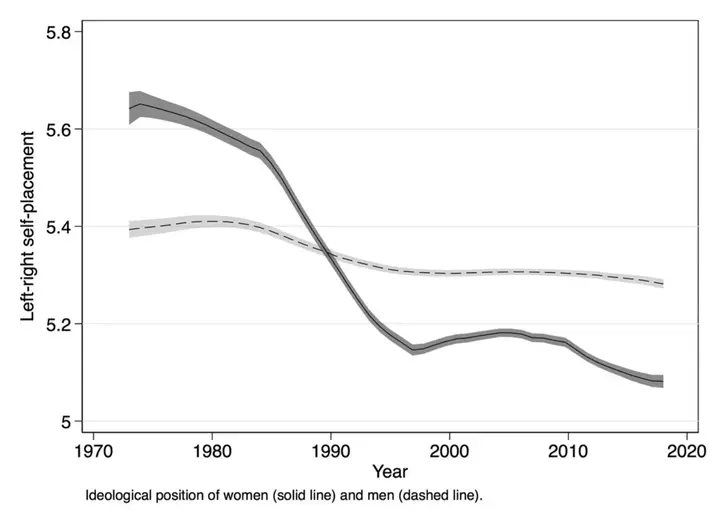Change and continuity in the ideological gender gap. A longitudinal analysis of left-right self-placement in OECD countries

Abstract
When asked to place themselves on a left-right scale, men and women tend to take different positions. Over time, however ideological gender differences have taken a different form. While women were traditionally more right-leaning than men, from around the mid-1990s onwards they have been found to take positions to the left of men. Using an originally constructed dataset that includes information on the left-right self-placement of more than 2.5 million respondents in 36 OECD countries between 1973 and 2018, I empirically verify how the ideological gender gap has evolved since. The results show, first, that while women have shifted to the left since the late 1970s, the pace of this change has strongly diminished since the late 1990s. Second, there is important between-country variation in the size of the reversal in the ideological gender gap. Third, with the exception of the Silent generation and the Baby-boomers, newer generations of women have not taken more left-leaning positions than generations before them.